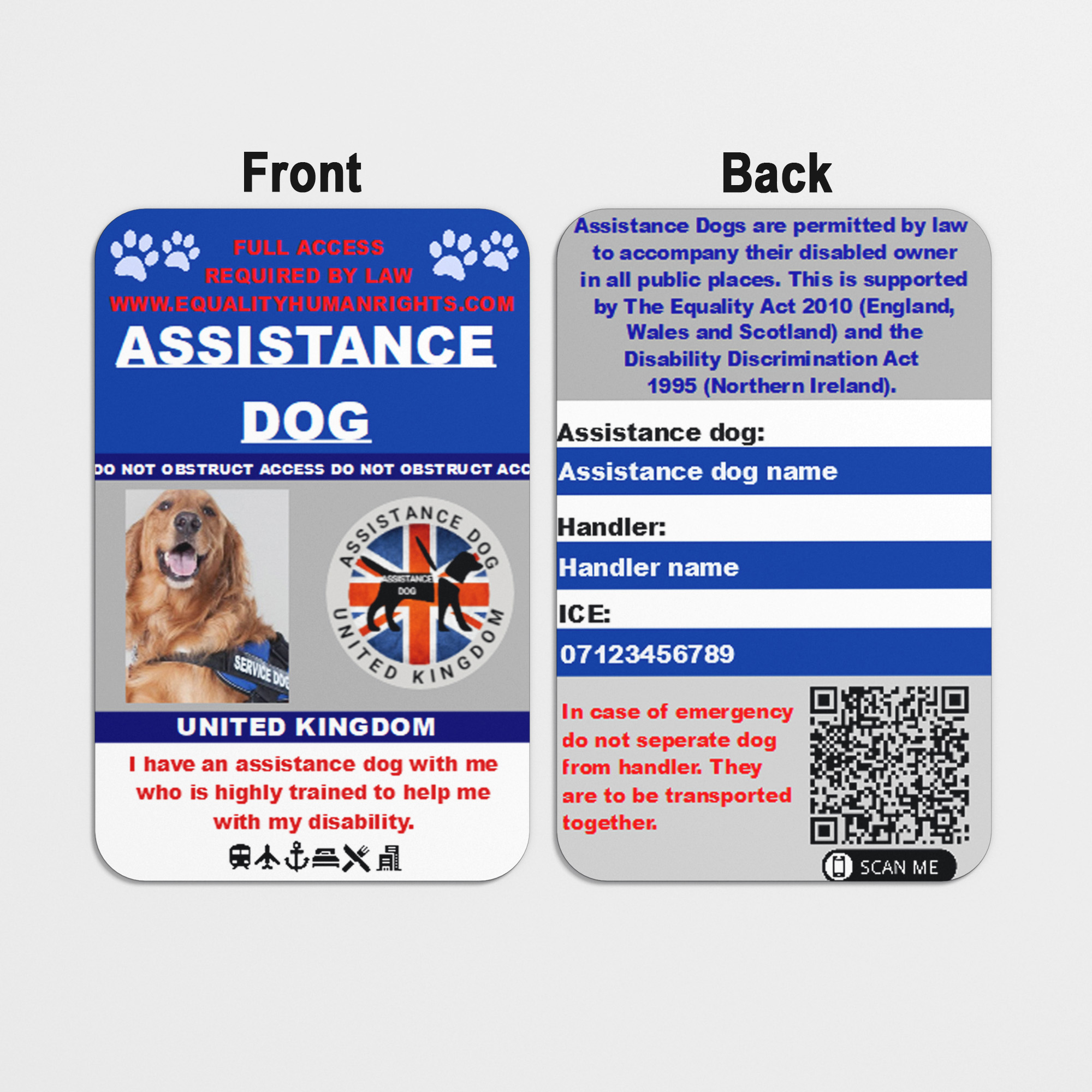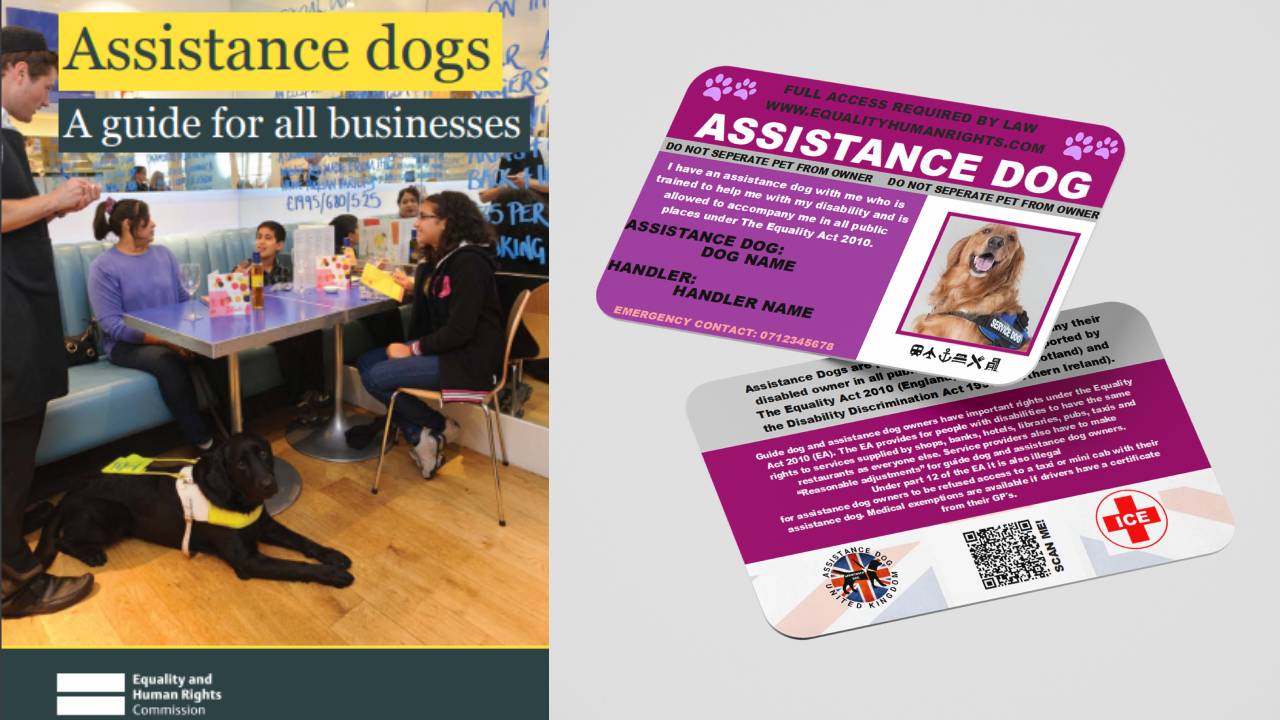Ns design blog
Understanding Your Rights: Proving Your Assistance Dog’s Status
Navigating the world with an assistance dog comes with unique challenges and opportunities. Understanding your legal rights and the practical tools at your disposal is crucial.
This blog post delves into the importance of proving your assistance dog’s status and how personalized assistance dog cards can play a pivotal role.
What Defines an Assistance Dog?
Assistance dogs, recognized as ‘auxiliary aids’, are trained to assist people with disabilities. They are crucial for their handlers’ independence.
Notably, the law doesn’t mandate specific identification like a harness or jacket for assistance dogs.
Legal Rights Under the Equality Act 2010:
The Equality Act 2010 protects individuals with disabilities from discrimination, including those with assistance dogs.
Discrimination can take various forms, including
The Role of an Assistance Dog Card:
While not a legal requirement, an assistance dog card can be instrumental in mitigating challenges in public spaces.
Our personalized assistance dog cards serve a critical purpose. They are not just an identifier but also a tool to educate and inform. Each card comes with a QR code that links directly to the Equality Act’s assistance dog guide for businesses.
This feature is particularly useful if an assistance dog handler faces questions or challenges regarding their rights.

The card includes essential details such as the:
- dog’s name
- the handler’s name
- emergency contact number
ensuring that all necessary information is readily available.
Why a Personalized Assistance Dog Card is Essential:
These cards are more than just an ID; they are an educational tool and a source of empowerment for the handler.
They provide peace of mind by clearly stating the law and the handler’s rights, potentially preventing misunderstandings or conflicts in public spaces.



